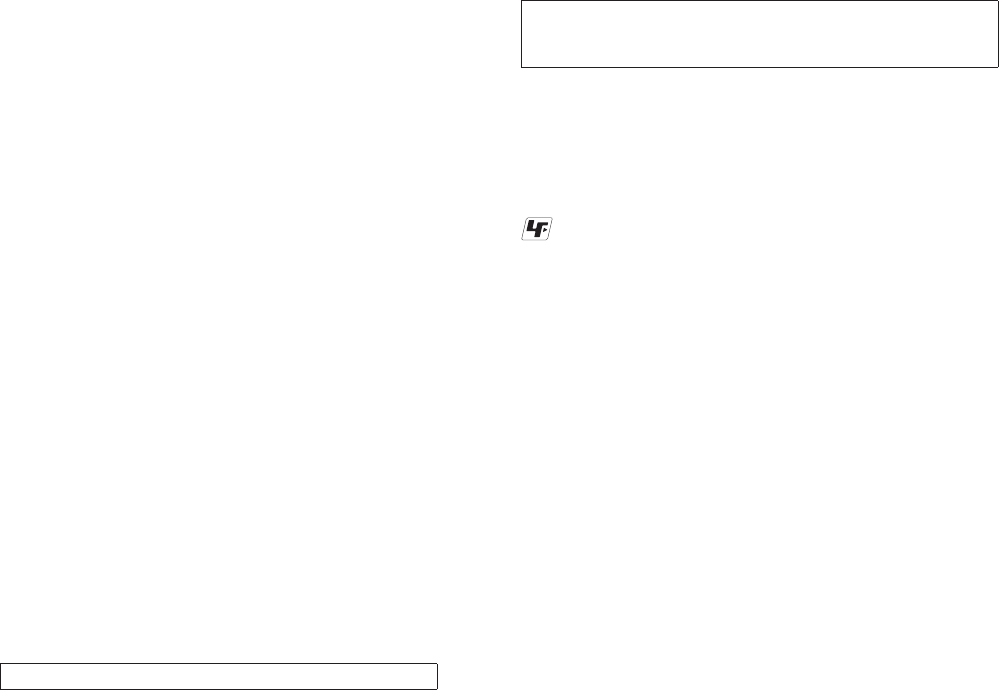
NWZ-X1050/X1051/X1060/X1061
3
1. SERVICING NOTES ............................................. 3
2. DISASSEMBLY
2-1. Disassembly Flow ........................................................... 8
2-2. Panel (Rear) .................................................................... 9
2-3. Hold Assy ........................................................................ 9
2-4. MAIN Board Assy (Including Battery Assy) .................. 10
2-5. Battery Assy (BATT1), MAIN Board ............................. 10
2-6. 5pin HP Jack Assy (J001), Chassis Section .................... 11
2-7. Key Flexible Print Board (FFC1), Chassis ..................... 12
2-8. EL Indicator Element (EL01) ......................................... 12
2-9. HOME KEY Board, Guard (Multi) ................................ 13
2-10. Button (VOL), Knob (NC) .............................................. 13
2-11. Touch Panel module (TPM1), Frame.............................. 14
3. TEST MODE ............................................................ 15
4. DIAGRAMS
4-1. Schematic Diagram ......................................................... 27
4-2. Printed Wiring Board ...................................................... 28
5. EXPLODED VIEWS
5-1. Panel (Rear) Section ....................................................... 29
5-2. MAIN Board Section ...................................................... 30
5-3. Touch Panel Section ........................................................ 31
6. ELECTRICAL PARTS LIST .............................. 32
Accessories are given in the last of the electrical parts list.
TABLE OF CONTENTS
NOTES ON CHIP COMPONENT REPLACEMENT
• Never reuse a disconnected chip component.
• Notice that the minus side of a tantalum capacitor may be dam-
aged by heat.
FLEXIBLE CIRCUIT BOARD REPAIRING
• Keep the temperature of soldering iron around 270 °C during
repairing.
• Do not touch the soldering iron on the same conductor of the
circuit board (within 3 times).
• Be careful not to apply force on the conductor when soldering
or unsoldering.
UNLEADED SOLDER
Boards requiring use of unleaded solder are printed with the lead-
free mark (LF) indicating the solder contains no lead.
(Caution: Some printed circuit boards may not come printed with
the lead free mark due to their particular size)
: LEAD FREE MARK
Unleaded solder has the following characteristics.
• Unleaded solder melts at a temperature about 40 °C higher
than ordinary solder.
Ordinary soldering irons can be used but the iron tip has to be
applied to the solder joint for a slightly longer time.
Soldering irons using a temperature regulator should be set to
about 350 °C.
Caution: The printed pattern (copper foil) may peel away if
the heated tip is applied for too long, so be careful!
• Strong viscosity
Unleaded solder is more viscous (sticky, less prone to fl ow)
than ordinary solder so use caution not to let solder bridges
occur such as on IC pins, etc.
• Usable with ordinary solder
It is best to use only unleaded solder but unleaded solder may
also be added to ordinary solder.
CAUTION
Danger of explosion if battery is incorrectly replaced.
Replace only with the same or equivalent type.
SECTION 1
SERVICING NOTES
System Requirements
x
Com
puter
IBM PC/AT or compatible computer preinstalled with the following Windows operating
systems:
Windows XP Home Edition (Service Pack 2 or later) / Windows XP Professional
(Service Pack 2 or later) / Windows Vista Home Basic (Service Pack 1 or later) /
Windows Vista Home Premium (Service Pack 1 or later) / Windows Vista Business
(Service Pack 1 or later) / Windows Vista Ultimate (Service Pack 1 or later)
* Excluding OS Versions not supported by Microso
* Excluding Windows® XP Professional x64 Edition
* E
xcluding 64-bit OS versions for use with PC application soware “Media Manager for
WALKMAN”
x
CPU: P
entium 4 1.0 GHz or higher
x
RAM: 512 MB or more
x
Hard Disk drive: 380 MB or more of available space
e supplied soware may require more available space depending on the version of
Windows. Furthermore, you need more space to store data such as music, videos,
photos, etc.
x
Di
splay:
– Screen Resolution: 800 × 600 pixels (or higher) (recommended 1,024 × 768 or higher)
– Colors: 8-bit or higher (16-bit recommended)
x
CD-ROM drive (supporting Digital Music CD playback capabilities using WDM)
To create original CDs, a CD-R/RW drive is required.
x
Sound board
x
USB port (Hi-Speed USB is recommended)
x
Microso® .NET Framework 2.0 or 3.0, QuickTime®7.3(supplied), Internet Explorer 6.0
or 7.0, Windows Media Player 10 or 11, DirectX9.0 are required. (Windows Media
Player 11 recommended. Some computers that already have Windows Media Player 10
installed may encounter le limitation (AAC, video les, etc.) that can be transferred by
dragging and dropping.)
x
A
dobe Flash Player 8 or higher needs to be installed.
x
Broadband Internet connection is required to use Electronic Music Distribution (EMD)
or to visit the web site.
We do not guarantee operation for all computers even if they meet the above System
Requirements.
Not supported by the following environments:
– Personally constructed computers or operating systems
– A
n environment that is an upgrade of the original manufacturer-installed operating
system
– Multi-boot environment
– Multi-monitor environment
– Macintosh


















